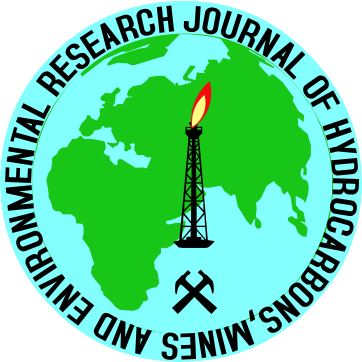JOURNAL OF HYDROCARBONS MINES
AND ENVIRONMENTAL RESEARCH
__________________
 |
©
Journal of Hydrocarbons Mines and Environmental Research, ISSN: 2107-6510,
Volume 5, Issue 2, December 2014, 55-67 __________________________________________________________________________________________________ |
Lithologie et contexte structural des formations
néoprotérozoïques et paléozoïques des Mauritanides
méridionales, région de Bakel, Sénégal oriental
Moussa Dabo 1,2,*, Tahar Aïfa 2,
Mamadou Gueye 3, Papa
Malick Ngom 1 and Gane Thiao 1
1 Département de Géologie, Faculté des
Sciences et Techniques, Université Cheikh Anta Diop de Dakar, BP 5005,
Dakar-Fann, Sénégal
2 Géosciences Rennes, CNRS UMR 6118, Université de Rennes
1, Bat.15, Campus de Beaulieu, 35042 Rennes Cedex, France
3 Institut des Sciences de la Terre, Faculté des Sciences et Techniques,
Université Cheikh Anta Diop de Dakar, BP 5005, Dakar-Fann, Sénégal
*corresponding author : moussadabo@hotmail.com (M. Dabo)
Received: 6 July 2014 - Accepted: 24 September 2014 - Available online: 25 September 2014
Résumé: Les
nouvelles données pétrographiques et structurales obtenues
sur les formations néoprotérozoïques et paléozoïques
de la chaîne des Mauritanides dans la région de Bakel, révèlent
une succession lithologique constituée, de haut en bas, de roches
paradérivées et orthodérivées démantelées
et exhumées lors de l’orogenèse hercynienne. Les reconstitutions
de la succession lithologique sont en partie hypothétiques car ces
roches sont très tectonisées, avec superposition de plusieurs
phases de déformation, et présentent en général
un métamorphisme masquant en partie les relations géométriques
primitives et la nature originelle des matériaux. Les roches paradérivées
comprennent des quartzites, des jaspéroïdes, des micaschistes
et des schistes qui présentent des paragenèses alumineuses
attestant d’un protholite sédimentaire. Elles sont localisées
essentiellement dans les domaines nord et sud du secteur d’étude.
Les roches orthodérivées sont constituées de métabasaltes,
de métagabbros et de serpentinites dont les paragenèses secondaires
ont permis d’identifier respectivement des basaltes, des gabbros
et des péridotites. Elles affleurent dans la partie centrale du
secteur d’étude et sont associées à des turbidites
et à des intrusions granitiques. Les turbidites, antérieurement
cartographiées comme des chloritoschistes, seraient des produits
de démantèlement des roches magmatiques. Ces formations sont
essentiellement modelées par une tectonique polyphasée hercynienne
marquée par des chevauchements en plats et rampes, et duplex relayés
dans le domaine central par une transpression inclinée responsable
du démantèlement et de l’exhumation des roches orthodérivées
de la séquence ophiolitique. Les conditions du métamorphisme
sont de basses à moyennes températures.
Mots clés: Mauritanides,
Bakel, ophiolite, hercynien, métamorphisme, transpression.
Lithology and structural context of the Neoproterozoic and Paleozoic formations of the southernmost Mauritanides, Bakel area, eastern Senegal
Abstract: The
new petrological and structural data obtained in the Neoproterozoic and
Paleozoic formations of the Mauritanides belt of Bakel (eastern Senegal)
reveal a lithological succession which consists, from top to bottom,
of parametamorphic and orthometamorphic rocks dismantled and exhumed
during the Hercynian orogeny. The reconstructions of the lithological
succession are partly hypothetical because these rocks are very deformed
with overlaid of several deformation phases and development of metamorphism
which partly mask primitive geometric relationships and the original
nature of the materials. The parametamorphic rocks include quartzites,
jasperoids, micaschists and shales which have aluminous assemblages that
evidence sedimentary protholite. They are mainly located in the northern
and southern parts of the study area. The orthometamorphic rocks consist
of metabasalts, metagabbros and serpentinites. Their metamorphic parageneses
are characterized by primary basalts, gabbros and peridotites, respectively.
They outcrop in the central part of the study area and are associated
with turbidites and granitic intrusions. The turbidites, previously mapped
as chloritoschists, would result from the destruction of magmatic rocks.
The architecture of these formations result from polyphase tectonic events
associated with flats, ramps and in the central area with duplex structures
and an inclined transpression responsible for the parametamorphic and
orthometamorphic rocks dismantled and exhumed of the ophiolitic sequence.
The metamorphic conditions are low to medium temperatures.
Keywords: Mauritanides, Bakel,
ophiolite, hercynian, metamorphism, transpression.